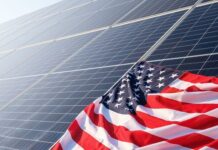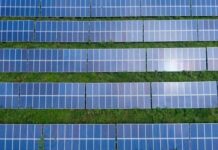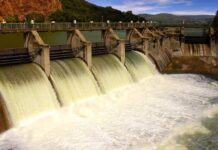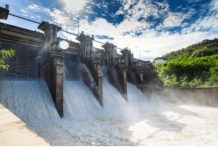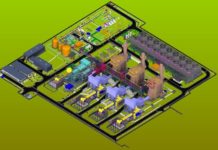The Bujagali power station would be one of a number of hydro-electric power plants scattered along the upper reaches of the Nile. These include hydro-electric projects at Owen Falls, Busowoko, Ralangala, Raruma, Ayago North, Ayago South and Murchison Falls.
Requiring an estimated investment of $530 million, construction of the Bujagali plant was due to begin in January 2003, but was initially delayed after vocal protests by environmentalists and residents of the area.
Construction at Bujagali was eventually suspended and the World Bank Group withheld its financing after corruption investigations by the US Justice Department and by the World Bank’s Fraud and Corruption Unit. In 2003, AES announced that it was pulling out of the project for economic reasons.
In February 2005, the Ugandan government announced it will go ahead with the project despite its problems and drawbacks. If it does go ahead, the project will sell power to neighbouring countries.
HYDRO-ELECTRIC DAM SITE
The power plant is planned to be situated 1,100m above sea level at Bujagali Falls, about 8km north of Lake Victoria, the source of the Nile. The low-pressure river power plant will have a vertical drop of 30m and total installation capacity of 250MW.
The main element of the project is a rock fill dam of 850m with an asphaltic core. The volume for this is 750,000mยณ. The plant will also have a power station with four turbines and a spillway with gates. Other elements are control / service building and switchyard and a 100km transmission line to Kampala and Owen Falls with two substations.
APPROVAL AND FINANCING
The Ugandan Parliament approved the project in 1999 after a year-long debate. Construction was due to begin in January 2003.
IFC was head of the financing institutions, which also included the World Bank, IDA, African Development Bank (AfDB), Deutsche Entwicklungs Gesellschaft (DEG), West LB and various institutions for export credit.
The Norwegian Guarantee Institute for Export Credits (GIEK) has in principle consented to give security. The Guarantee Institutes of Sweden, Switzerland, Italy and Finland are also positive about the project. Approval by the IFC and the World Bank is a prerequisite for further involvement by the guarantee agencies.
POWER PLANT LINKAGE AND CONSTRUCTION
The Bujagali power plant is planned to be linked to the existing Owen Falls plant, as well as to Kampala, the capital, over the grid. The Ugandan government will probably buy Bujagali’s entire energy output. AES Nile Power was to be responsible for the construction of a 97.5km transmission line, although the Ugandan Government would own the infrastructure.
Construction was planned to commence in early 2002, with an estimated construction period of 44 months before the testing of the project could begin. The project was then scheduled to go into production six months later, but has been further delayed.
About 97% of Uganda’s population do not have access to electricity. Uganda’s power shortage is the single greatest obstacle to the country’s economic growth. The demand for electricity is growing rapidly. The power shortage in Uganda when the project was planned was 80MW per day. The capacity in 2002 was around 380MW.
ENVIRONMENTAL CONCERNS
There has been much protest about the dam. There have been complaints that the project was not subjected to competitive bidding, and that locals will anyway not be able to afford the electricity it produces. When the plant is built, the falls and islands will be submerged. Vegetation and bio-diversity will be lost, including crabs, birds and trees characteristic of the area. The tourism industry will also be dramatically affected.
Bujagali is a Category A project according to IFC’s Procedure for Environmental and Social Review of Projects. This is because it may cause “significant adverse environmental and/or social impacts that are sensitive, diverse or unprecedented”. The World Bank eventually approved a number of measures to address the utility and sustainability of the controversial project after a Bank inspection panel raised a number of concerns.
EPC CONTRACTORS AND SUB-CONTRACTORS
The Bujagali EPC Consortium (BEC) consists of several companies with connections in Norway. The building and construction work would be carried out by Veidekke and Skanska International Civil Engineering. Alstom Power Ltd (Switzerland), GE Energy AS (Norway) and ABB Distribusjon AS would be responsible for the electro-mechanical work. Veidekke heads the consortium and a German consulting company, Lahmeyer, co-operated with a Norwegian company, Norplan, to provide the design for the hydro-power dam.
The EPC contract requires the contractors to give a binding price for a complete and fully tested power plant at the start of the project. This will not change if construction costs escalate.



